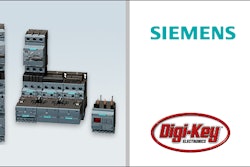
格兰特钱烧一个假日e in their pockets, advisors at theDelta Instituterecently conducted free industrial energy audits for 39 manufacturers in the Chicago area, helping them—for those that would accept the help—to build more energy-efficiency operations. Combined with a decade’s worth of analytical data from theInternational Engineering Consortium(IEC), Delta has gained useful insight into what energy programs manufacturers are willing to implement, how effective they are, and their economic ramifications.
Delta designs programs that are both good for the environment and good for the economy, explained Tom Cushing, senior advisor, who spoke Wednesday atThe Automation Conference(TAC) in Chicago. “Energy efficiency is the most natural starting place,” he added.
The team conducted its audits in 2011-12, providing reports to give the manufacturers something to measure and manage, then following up to find out what they did and didn’t implement, the reasons for those decisions, and the economic ramifications.
Comparing recommended energy-saving measures to those implemented across various states in the 2002-11 IEC data set, Delta found that the same measures were still considered good ideas. These included installing more efficient lighting, dealing with leaks and insulating pipes, using more efficient motors and mechanical components, and using a better fuel/air mix for better burn efficiency.
The economic and environmental impact could be significant. According to a U.S. Department of Energy (DoE) study published a couple years ago that looked at manufacturing sectors across the country, the Midwest dominated in five of the six sectors most represented in manufacturing: primary metals, food, machinery, transportation equipment and fabricated metal products. However, energy use was 25-60% more intensive in the Midwest that other regions. “Energy was cheap, and it tended not to be measured or managed,” Cushing said.
So, in just those five sectors, if the Midwest became just as energy-efficient as the rest of the country, manufacturing in the region could save 670 trillion BTUs, or $7.3 billion. And energy efficiency has a compounding effect, Cushing explained, meaning that the money saved in the first year continues to be part of a company’s bottom line year in and year out.
If all the measures recommended to the 39 manufacturers by Delta were implemented, they could translate to savings of $1.4 million. Extrapolating across Cook County brings the total to $303 million, and $703 million if extrapolated across the state of Illinois—not to mention the significant greenhouse gas savings.
However, turns out that’s a pretty big “if.” In fact, many of the recommended measures were not implemented. “We were shocked to learn that many of the measures that were low cost were not implemented,” Cushing said. “Things like turning off the machinery when it’s not being used.” He likened such a measure to turning off the water when you brush your teeth, an easy thing to do and simply a behavioral modification.
What Delta discovered as reasons for inaction:
- Recommendations go to the wrong person
- Lack of incentives for energy-efficient action
- Budget challenges
- Lack of long-term financial planning
- Focus on business operations, not efficiency
- Mismatch between the skills needed to run the business and the skills needed to improve energy efficiency
Delta recommends some ways to overcome barriers:
- Create high-level organizational buy-in and support
- Include sustainability goals in job descriptions and performance plans
- Educate and encourage staff behavior changes
- Provide technical on-site assistance to implement recommended measures
“In some ways, this almost seems self-apparent,” Cushing said. The takeaway, he added, is that change is going to come because the company’s leadership prioritized energy efficiency.
One of those 39 manufacturing companies audited by Delta has a leader who has embraced the need for improvements in energy efficiency, and who explained to TAC attendees the relatively quick return on investment (ROI) his company has been able to achieve, in addition to the energy saving benefits.
Howard Skolnik is president and CEO of Skolnik Industries, a small business on the southwest side of Chicago that makes steel drums for radioactive materials and other toxics.
“We have to keep recreating ourselves; we have to keep bringing out new products. We look at our operating costs on a daily basis,” Skolnik said, adding that they also examine energy efficiencies daily. “Energy is a significant operating cost.”
厂商实现了能源公司ving measures, including moving from solvent-based to water-based paints for its drums (this not only provides energy savings of $15,000/year but eliminates paint fumes); replacing open-ended paint ovens with high-efficiency batch ovens for drum lids (saving $7,000/year); replacing the air circulation system in ovens (saving $4,000/year); repairing leaks in compressed air lines (saving $10,000/year, with a project cost of only $2,000); installing more efficient lighting (saving $12,000/year); and more.
“Clearly it takes money to save money, and I think that’s the hard sell. Sometimes it’s a hard pill to swallow,” Skolnik said. “We’re a small business, and when I look at an expenditure of $300,000 that gives me a four-year ROI, it’s impressive. But it’s a hard sell.”
Cushing summarized, “The need for a strong manufacturing sector is critical to the Midwest. I think this is a small but important part to bringing them up to speed.”




















